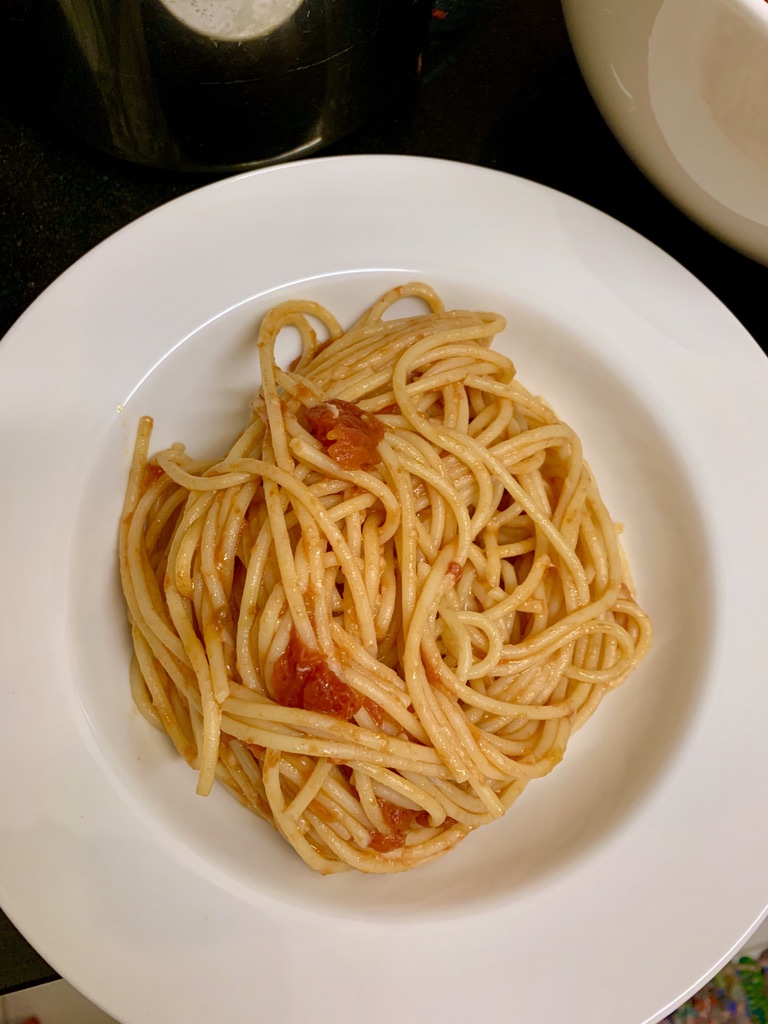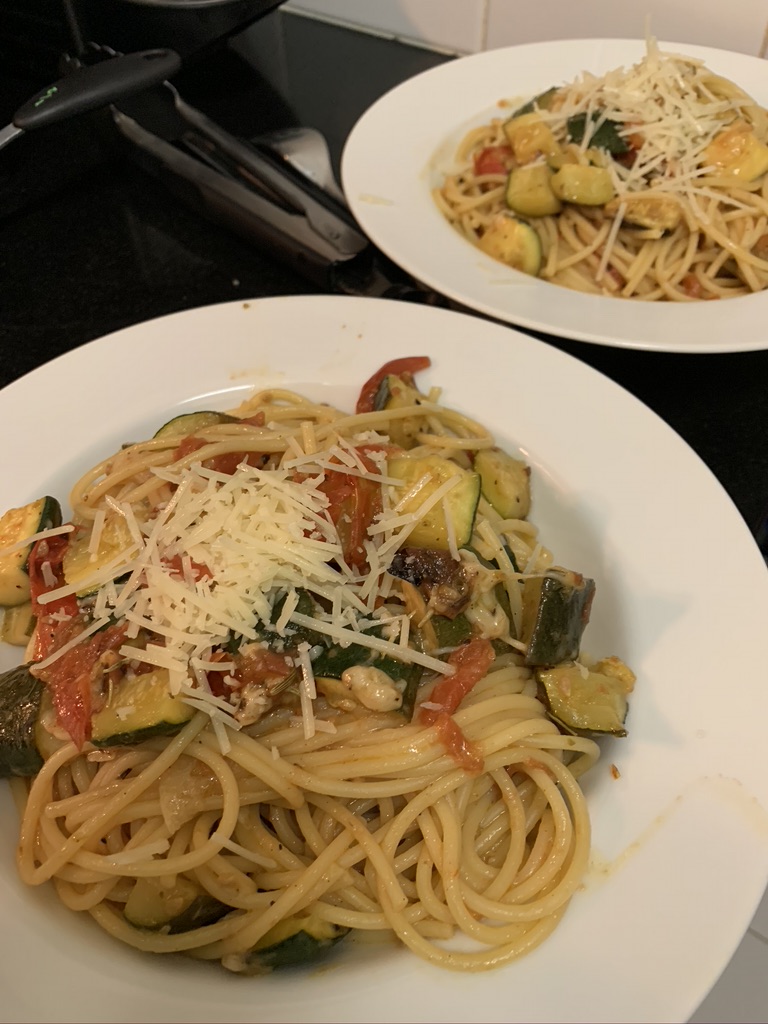It’s Chinatown
One thing I’ll definitely appreciate after this pandemic ends: restaurants. Turns out, it’s awesome to go somewhere, and have somebody who isn’t you cook the food and clean up after. In our neighborhood, there are a slew of restaurants open for pickup and delivery even now. But, out of an abundance of caution, Jess and I have held off, cooking all of our meals at home instead.
To make meal planning easier, we’ve settled onto a rotating thematic schedule: Italian Sunday, Asian Monday, Taco Tuesday, etc. And then, each week, we choose specific dinner dishes to slot in for given days. Sometimes, we’ll opt for relatively straight-forward options. But, recently, as we’ve increasingly missed restaurant favorites, some menus have become increasingly convoluted.
This past Friday, when we were charting out plans for this week, Jess said that she was craving Han Dynasty’s dry pepper style tofu. So I agreed to make that for her, and a chicken version for me. Plus, I hadn’t had dim sum for months, and so I decided I’d make some pot stickers and siu mai and egg rolls.
As they say, it seemed like a good idea at the time.
Fortuitously, about two years back, the Korean grocery chain HMart opened an amazing location on the Upper West Side, about twenty blocks up from us. So, yesterday afternoon, I hoofed it up there, to buy the slew of ingredients needed that aren’t available at our local Whole Foods. Sadly, my work for the day had taken longer than expected, so I didn’t head out until late in the afternoon, and therefore didn’t make it back until 6:30pm or so. At which point, I still had to infuse chili oil, marinate chicken, deep-fry tofu, prep the sauce and ingredients and stir-fry it all up, and make the fillings for and hand-form and steam and fry the dim sum.
Which, not surprisingly, wasn’t exactly quick. By the time we ate, it was nearly 11pm. And though it was delicious, and I even managed to freeze a ton of prepped dumplings for future, speedier use, I was exhausted and overwhelmed by the end of the night. Post-dinner, as I had used pretty much every pot and pan and bowl we own in the cooking process, Jess and I only managed to make it through cleaning half of it, before giving up for the night, and picking up again to finish this morning.
All of which is to say, the next time we get the same meal delivered from Han Dynasty, I’ll be unbelievably thrilled to pay them $60 to do all of that for me while we sit watching TV on the couch. After last night, it would still seem cheap at even two or three times the price.

